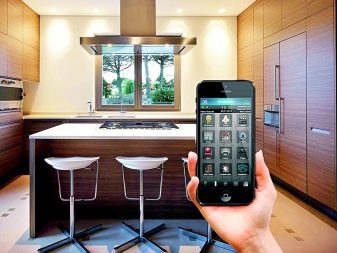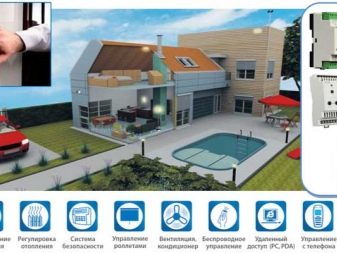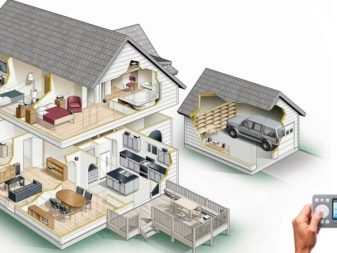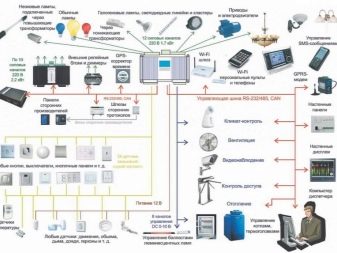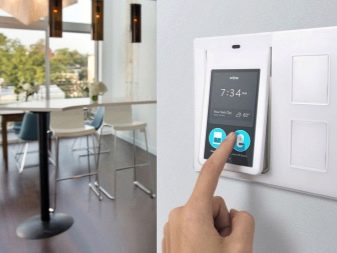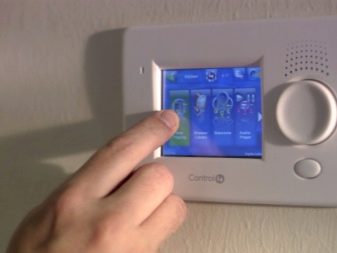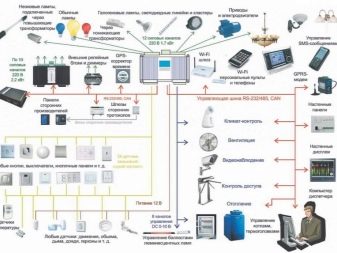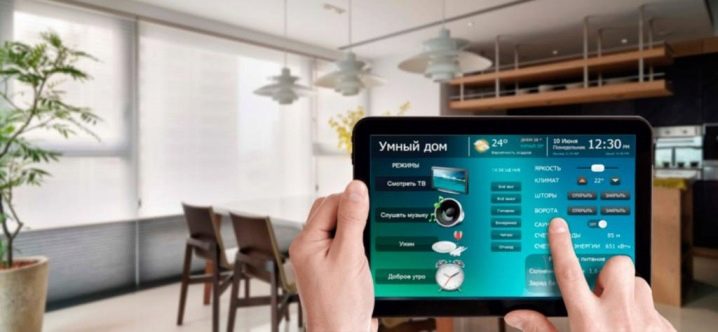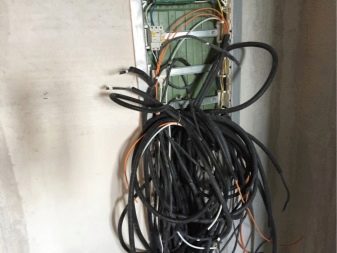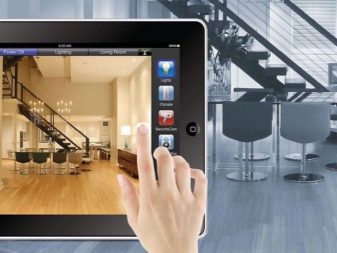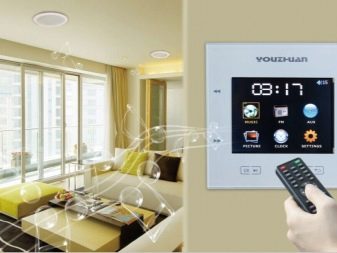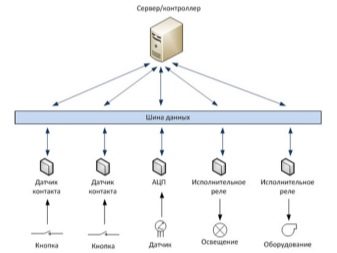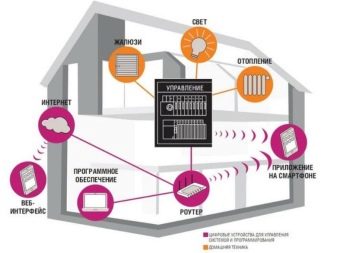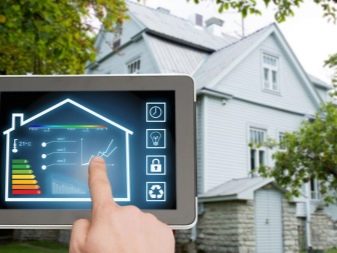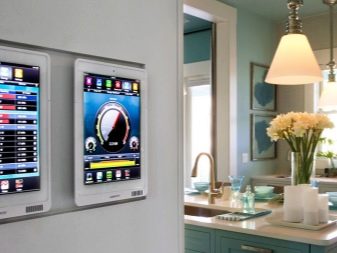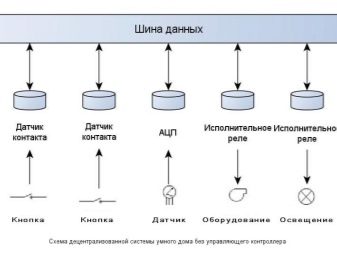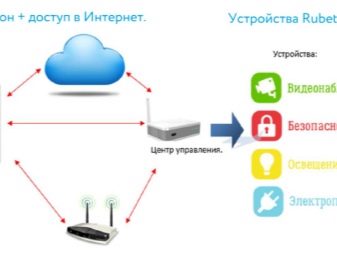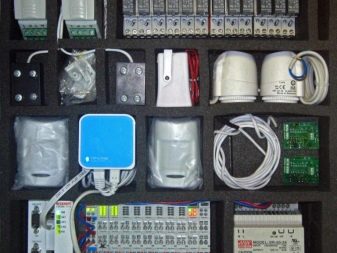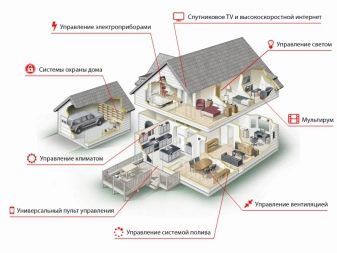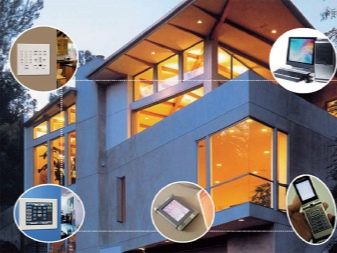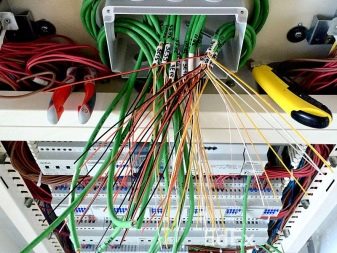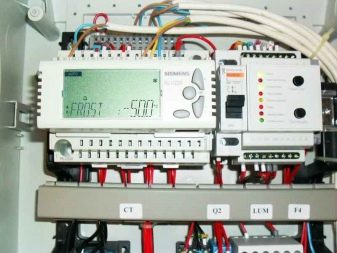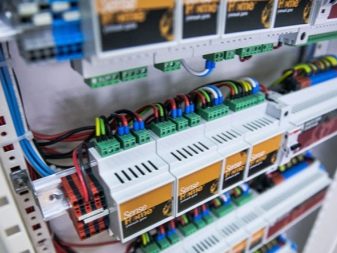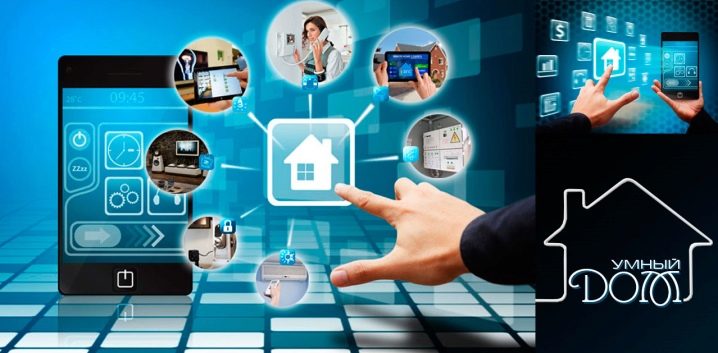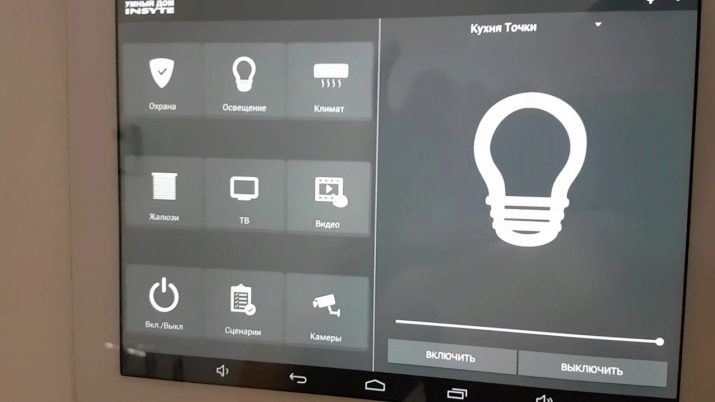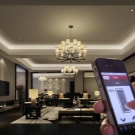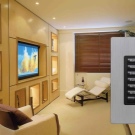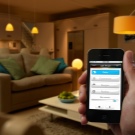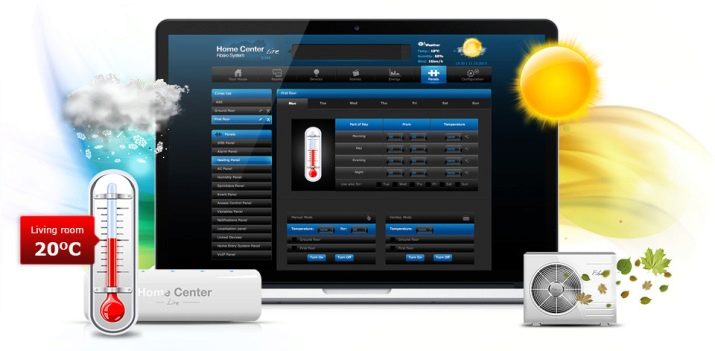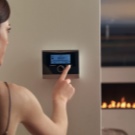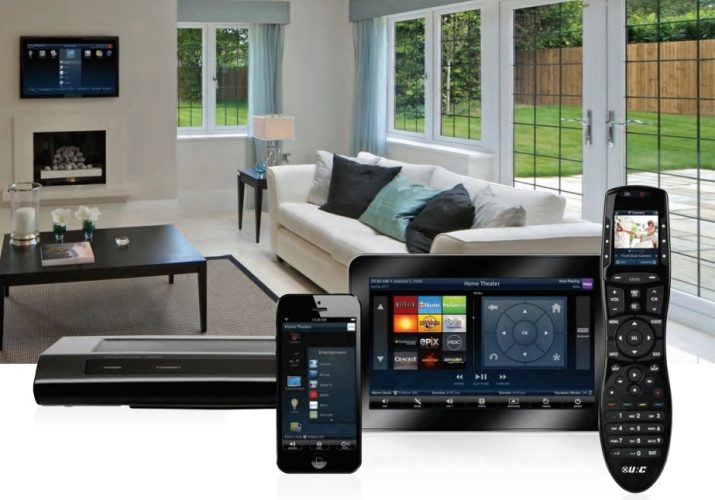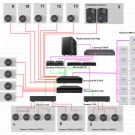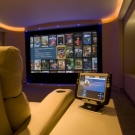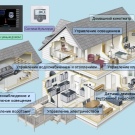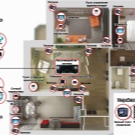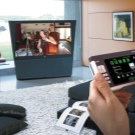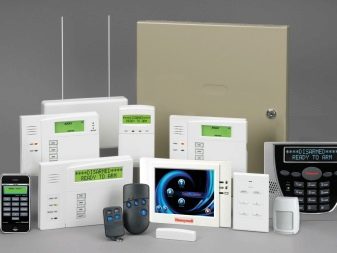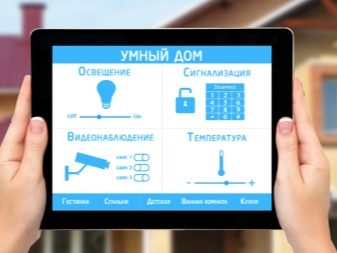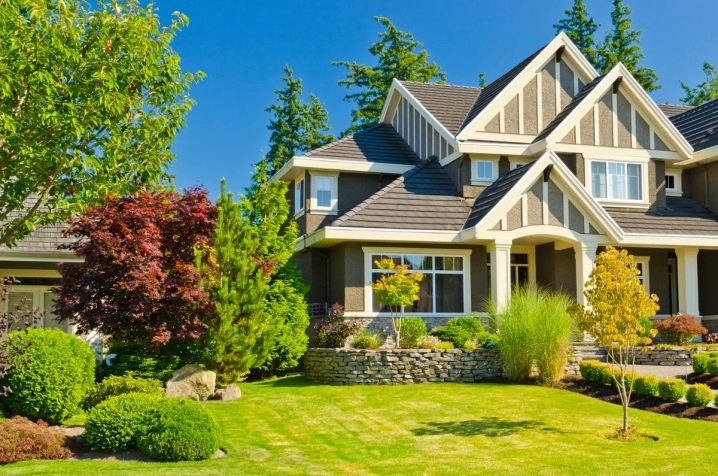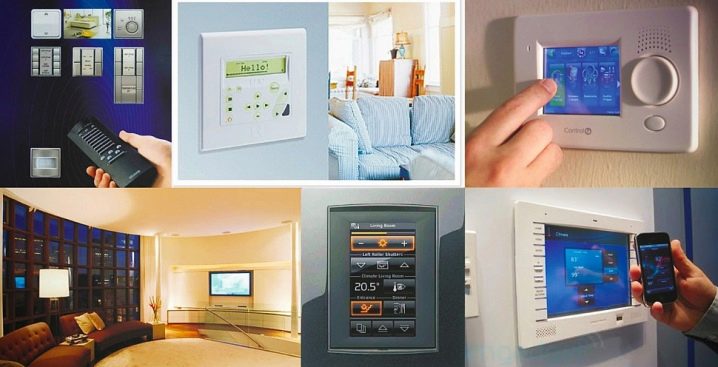Smart home: how it works and how to design?
Having a home in the country is everyone’s dream. Therefore, each family, having financial capabilities, is trying to purchase or build housing that would meet modern standards of living. Recently, projects of "smart home" are very popular. They not only allow you to correctly plan the space, but also guarantee the owners maximum comfort and convenience.
General characteristics
"Smart Home" is a housing of the future, in which the work and control of all systems is carried out automatically, providing the premises with a high level of security and all the necessary conditions for living. In such houses, the labor costs for management are completely excluded, since the installation of temperature, lighting and other things is not done manually.In addition, the building is equipped with special monitors with sensors that can pre-identify potential threats to both their own systems and the residents themselves.
In the event of interruptions in power supply, malfunctions in the operation of heating, smoke and unauthorized entry, the installation instantly notifies the owners and solves problems on its own.
The main advantage of a smart home is that its flexible control systems can significantly save energy costs, since in the absence of tenants all the devices are turned on for economy mode. Thanks to the pledged programs, such an installation will correctly fulfill all the instructions of the owners, often predicting them on their own. Therefore, it can be said that after installing such an innovation, a “non-standard butler” appears in the housing. The only minus of installation is the high price, but it justifies itself over time.
Kinds
To make a country house as comfortable as possible, many owners install a “smart home” system, which helps not only to save energy resources, but also valuable time by performing automated management of all communications and entertainment centers.Depending on what features and capabilities are available in the installation, it is divided into several types.
Wired
It consists of switches, sensors and climate control devices. All equipment is controlled by a wired panel, which receives signals. It is located in the main shield and cables are brought to it. The advantages of a wired installation include high reliability, as well as a high click rate. After pressing the button, the program starts without delay, which saves the tenants from a long wait, the scripts do not “freeze” when correctly installed. In addition, the controls are characterized by a beautiful design. They are usually equipped with smart switches and a variety of integration systems.
Thanks to the wired "smart home" is much easier to adjust the temperature in the rooms, as well as control the video and audio room. It serves for a long time, as the devices have no batteries that require constant replacement. The switches in this case are fireproof and low-current. In order for the system to work reliably, before installing it, it is necessary to select in advance the location of the panel and bring the cables there.
If the country house is built of wood, then the owners need to first agree on the project and prepare a place for electrical wiring.
Wired device is also recommended to install in the process of repairing housing, when the wiring is not done according to the classical scheme. In the finished building it will be problematic. For installation, usually use a large shield with a width of up to 60 cm and a height of up to 150 cm. Installation work is best done with the help of experienced specialists, as the equipment is expensive and the slightest mistake can cause a number of troubles.
Wireless
In contrast to the previous option, in this system the executive signal is transmitted to working devices not through wiring, but through a dedicated radio channel. This allows significant savings on wiring and installation. Such installations can be placed in homes with complete repairs and conventional wiring diagram. Due to the fact that each switch is “wireless”, it is possible to set different lighting effects by pre-programming the function keys. Installation of these systems does not require the preparation of the project, so it is ideal for wooden buildings, and its price is quite affordable.
Wireless "smart home", working from a radio channel, directly depends on the quality of communication, so various interference from phones and electrical appliances can adversely affect its functionality. In addition, the quality of radio communication also depends on the building material of the walls, and if the wiring is too scattered on the walls, the signal level will be minimal. In the case when the system is controlled on batteries, they should be changed regularly, otherwise at the most inopportune moment something may not work.
Some wireless systems consist of radio equipment that is powered by alternating electricity, so they need to lay a neutral wire for them. To avoid problems with the installation of such an installation, it is recommended to immediately lay an additional neutral wire under the switch. It is put in a box. The disadvantage of the device is that it is difficult to establish stable functionality in it, since the house will have to manage not only floor heating and lighting. In addition, the security of the installation is low and “hackers”, by attaching an external communication signal, can quickly disable it.
Centralized
Its operating principle is based on programming modes that come from a single logic module. As a rule, the device is represented by a controller with many outputs. The controller is pre-loaded with a unique program responsible for managing communication systems and actuators. Thanks to such technologies, it is possible to apply a huge selection of complex scenarios and any equipment. The advantages of the device include the ability to control in one window, the creation of complex tasks, given the state of the home owners, the time of day and the lunar cycle. In addition, it is possible to connect any type of equipment to the system.
As for the shortcomings, they also exist. First of all, such a centralized “smart home” completely depends on the human factor, because it works according to a program written by a programmer, and if contact is lost with it, you will need to completely reprogram the entire system. Secondly, when installing, you should install a high-quality controller; otherwise, if it fails, it can stop the entire system. Thirdly, it is a high cost.
Decentralized
The work of the “smart home” in this case is based on the use of a microprocessor with a non-volatile card. Therefore, these systems are considered the most reliable and in case of failure of even one equipment, the entire system will continue to function fully. Installation is easy to maintain, and if there is a need to create a new script, then an additional logic block is simply used for this. Today on sale you can find a lot of decentralized systems, differing in functionality and design.
In contrast to the previous options, when installing the installation, many devices are placed in a shield, therefore it is recommended to give preference to well-proven manufacturers, otherwise in the future you may encounter their failure.
Necessary equipment
Before installing the “smart home” system in your country house, you need to create the right project and purchase all the necessary devices.
Depending on personal preferences, the set of equipment may be different, while the minimum set should consist of:
- sensory system;
- adjustment, with which technology and lighting will be switched on and off;
- monitors where video surveillance will take place;
- alarms;
- controller;
- application programs for smartphones containing the necessary gadgets;
- cloud network channels that simplify the connection and control devices.
How to install and configure?
Installing a "smart home" is quite accessible with your own hands, but since installation and technology require proper performance, it is best to seek help from specialists. The contracting organization will begin by identifying the features of the object, then suggest the most appropriate project. After designing, an estimate will be made, which will include control devices and a system diagram.
If the owner of the house is confident in his abilities and can do the installation himself, then he needs to perform the following steps.
- Before the start of repair work in the housing, it is necessary to lay a network of cables and install a server cabinet, racks under it and close all the wiring boxes. In the technical room you need to place equipment for electrical supply, a switch, and connect the automation to the modules.
- After the repair of the premises is completed, you can install the speakers and control system by connecting touch panels. Next, you should carry out a test setup of the system.
- The final stage will be the final adjustment of the equipment and the test work, after which the installation is commissioned. With proper design and installation, the smart home system will begin to function effectively and fill the interior of the home with harmony and comfort. To reliably hide it from prying eyes, even at the stage of finishing the room you will need to skillfully hide ancillary equipment and wiring.
From the above, we can conclude that the installation of a “smart home” is laborious, since most of the time is devoted to the creation of a project and installation of equipment. The speed of work depends on the number of installations, the material of the walls and the area of housing. Usually the whole process takes up to two weeks, including scenario programming.
Control systems
Typically, modern city apartments and houses in the country use purification, air conditioning, lighting systems, as well as security alarms and video audiotechnics.Therefore, equipping their homes under the "smart home", its owners have the unique opportunity to conveniently manage all this "orchestra." In order for automation to occur quickly and without failures, such an installation is divided into subsystems: security, climate control, lighting, multi-room and home theater. Each of them is characterized by its own type of management.
Lighting
Groups or individual lamps can operate in a different mode, for this they are given their own level of illumination. The control is carried out with the help of remote controls, remotely it is possible to set the illusion scenarios of finding the hosts in the apartment. All light sources are controlled by a single remote control, and you can additionally set a date, time, or a specific event. Similarly, the brightness of the devices is adjusted, as well as the automatic switching off of the lamps when leaving the room.
Climate control
This system controls the devices that provide heating, air conditioning, purification and ventilation of air. Thanks to the settings that have been set, the equipment works smoothly in the specified mode.In addition, some projects also provide for remote control of the climate, due to which a comfortable temperature is set before the arrival of home owners. All appliances are controlled from a single remote control, where you can control the heating depending on the date, time and season. Indoors, there are also additional humidity and temperature sensors, which work at a certain time and regulate the climate.
Home cinema and multiroom
This system includes not only players and televisions, but also related equipment: curtains, blinds and lighting. Thanks to the well-established work in the room creates a special atmosphere for watching movies. Management is both voice and automated by pressing buttons on the remote.
Safety system
It is a unique multifunctional device that is remotely controlled and promptly responds to various disturbing situations, including fire safety, alarms, and disruptions in communications. Fire and burglar alarms work automatically and turn on immediately after the owners leave the house.It can be monitored using a cell phone or remote control. Remotely, you can receive signals about gas leaks, water leaks and burglary. Information instantly goes to a mobile phone or computer.
Tips
The device "smart home" is ideal for a country house, giving, and for the apartment. Since the system is expensive and its installation is not easy, then homeowners who want to carry out the installation themselves, to avoid errors will help the recommendations of experts.
- Do not use equipment that does not match the style of the room. Different design equipment will spoil the interior of the room, because it is ugly when the panels in the room are arranged in a chaotic manner and differ in color from the decorative walls. For example, a plastic white intercom is misplaced on a wall with a dark surface. Therefore, even at the design stage, such moments need to be given special attention and purchase suitable keypads and panels. In addition, the device must be further masked with special plates or frames, harmoniously combined with the other elements of the interior.
- Not a good idea is to install a large number of control panels on the same wall. For example, the floor heating thermostat, climate control, a multiroom remote control and a switch installed at the same time will not only complicate the operation of the equipment, but will also look cumbersome. As a result, "smart home", on the contrary, will complicate life and will not make it comfortable. Therefore, to prevent this, you need to try to have a minimum of devices on the walls, preferring only sockets, switches and touch panels. As for the temperature setting in the rooms, it is usually performed once a season, so the control panels can be installed only in important rooms.
- Many homeowners prefer to install "smart home" only with wireless control. Of course, modern life is designed in such a way that everyone cannot live without a tablet or mobile phone. But if you fully rely on this method of control, then you can be a zone of risk and lose control over the devices in the event of a smartphone breakdown or Internet disconnection.Therefore, experts advise to simultaneously connect wireless and wired panels.
They can be located at the same place, their service life exceeds 30 years. Mobile management will be performed using a tablet or phone. In the event of a breakdown or loss of a mobile device, the system is easily reset to a stationary control. It is difficult to break and such panels are not discharged.
- A smart home is considered to be a complex system in which all components must work well and harmoniously. Therefore, purchasing equipment from different manufacturers, such harmony can be broken. As a result, incompatibility problems will arise, and the installation will not only be difficult to manage, but serious malfunctions in its operation are possible. To prevent this, it is necessary to select equipment that has the same technical indicators and information transfer rate. It is also not recommended to additionally use auxiliary software and expansion gateways or installers, they will only complicate settings and control.
- Professionals usually build a “smart home” system based on a software platform and equipment from a single manufacturer, whose products are well known in the market and have positive reviews.The correct solution will also be the acquisition of a single integration platform, which is designed for automated control of climate, lighting, security systems and fire safety, and audio and video equipment. It is reliable in operation, its warranty service is up to 5 years, and most importantly, the platform ensures the compatibility of all devices.
- During the installation of "smart home" it is important to organize the workflow correctly, using special software applications. In this case, it is undesirable to create scenarios for climate, music or light, as they will complicate management. Each brand offers its own development programs, so if you install them all, it will be difficult to find the necessary tab on the desktop. In addition, to configure, you will need to constantly switch from one program to another and regularly update the software.
- Simplify the task will help the installation of a single application designed for "smart home". Thanks to him, it will be possible to check the device mode in seconds, automatically update the version and quickly find the necessary section in the lists.
- To make the installation enjoy comfortable conditions for living, its design is best entrusted to specialists, since the slightest inaccuracy in the schemes can disrupt the operation of the system and disable expensive equipment.
How to design the Smart Home system, see the next video.

